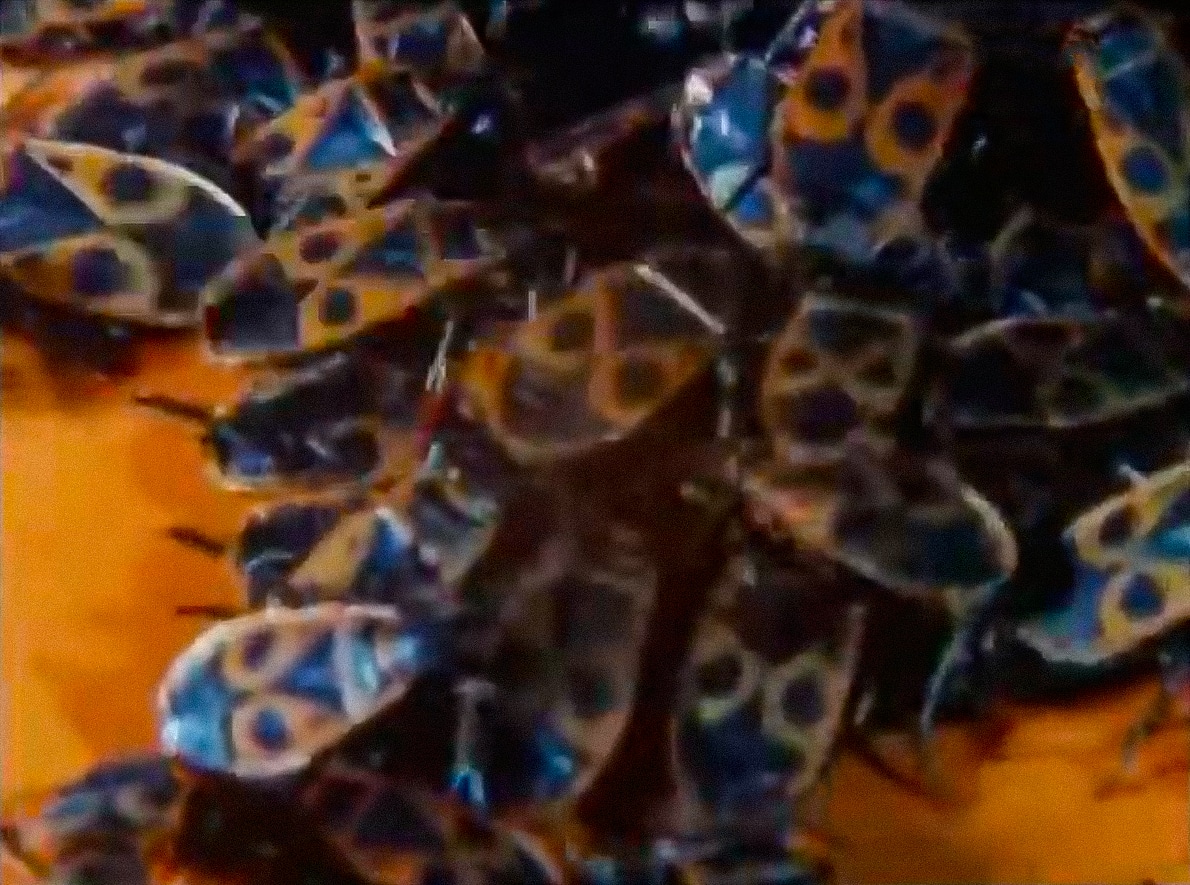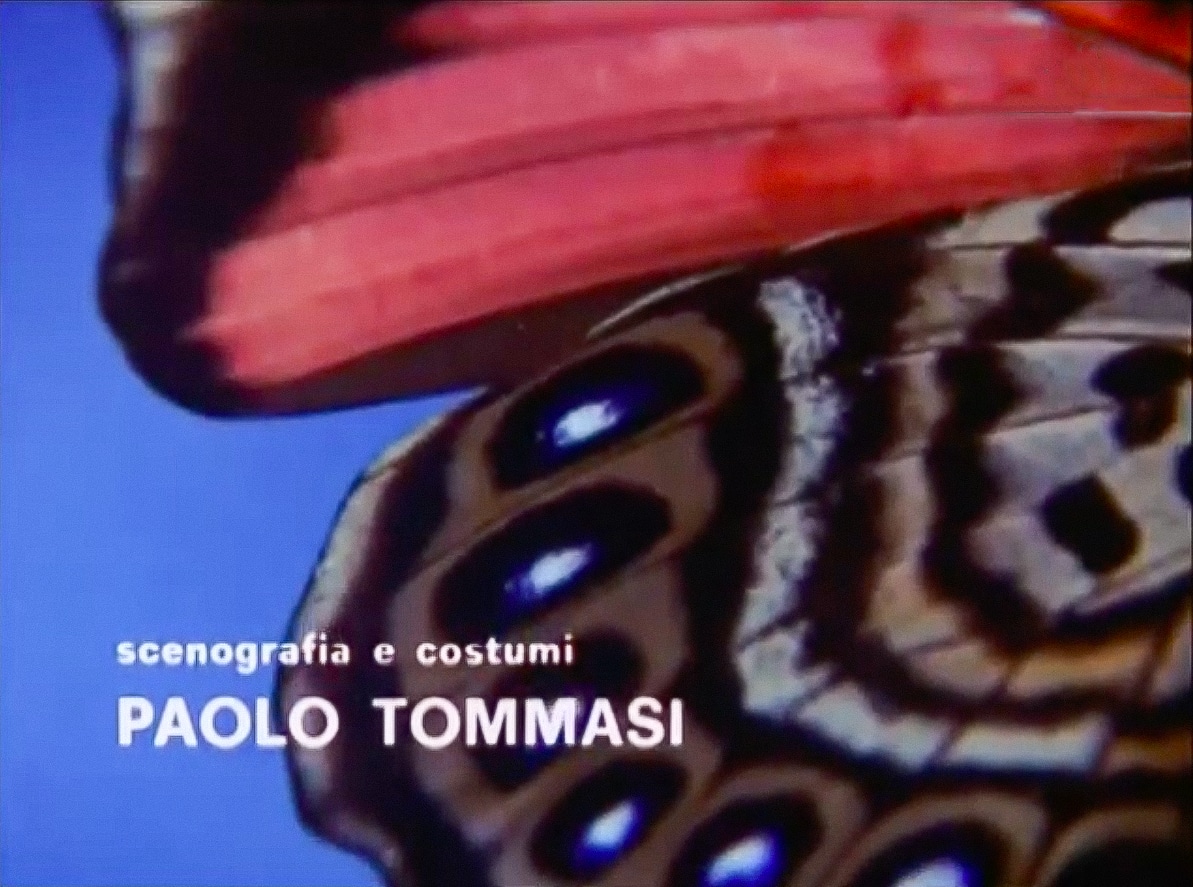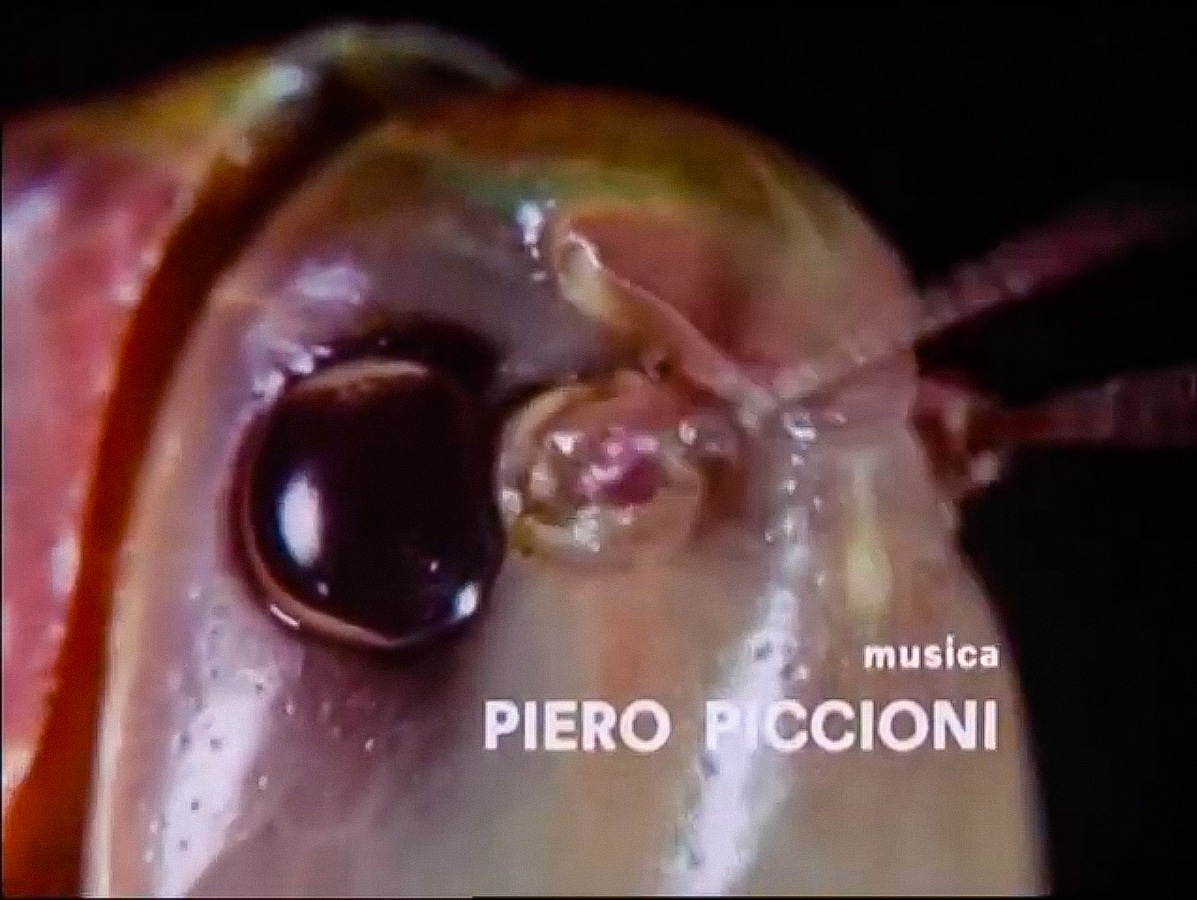Stéphane Delorme is a film critic. His work as editor-in-chief of Cahiers du cinéma from July 2009 to April 2020 resonated with the magazine’s critical legacy, particularly that of André Bazin and Serge Daney. During this period of major transformations in the cinematic medium, he interrogated film’s relationships to other moving image regimes, renewed consideration of how film forms relate to politics, explored new film education practices, and mapped global cinema trends in a context of upheaval. In April 2019, he coordinated a noteworthy special issue of Cahiers (no. 754) titled “Herbier – Arbres, plantes, fleurs” (herbarium – trees, plants, flowers). His two contributions for Palm under the title of “The Spider” extend his singular reflections on the living world. Dork Zabunyan
Something strange happened as I was watching Toh, è morta la nonna! (“Oh, Grandmother’s Dead!”), a 1969 Italian comedy by Mario Monicelli never released in France, on YouTube. The striking credits feature a parade of images of insects set to the pulsating beat of Piero Piccioni’s music, which toys with occasional synchrony between the bestiary and the percussion with a frenzy recalling Teo Usuelli’s contemporary compositions for Marco Ferreri (Break Up, Dillinger is Dead). Beyond the wonder of this animal orchestra, a second association is made between the credits and the images, between the jobs and the insects: firebugs swarming for the actors; two pairs of grasshoppers that seem to be deep in discussion for the four screenwriters; a praying mantis for producer Franco Cristaldi; a cricket that seems to be fiddling with batons like a conductor for the composer; a butterfly, the sublime fluttering of its wings echoed in the trembling of the music, for costume designer Paolo Tommasi; and lastly, a spider set to attack for director Monicelli.

Mario Monicelli, Toh è morta la nonna!, 1969 
Mario Monicelli, Toh è morta la nonna!, 1969 
Mario Monicelli, Toh è morta la nonna!, 88min, 1969 
Mario Monicelli, Toh è morta la nonna!, 88min, 1969 
Mario Monicelli, Toh è morta la nonna!, 1969

Mario Monicelli, Toh è morta la nonna!, 88min, 1969
The third association arises when the film begins, upon understanding that the nonna of its title was the owner of an insecticide factory. The credits can be fully relished in retrospect, as all of these animals were precisely the targets of extermination and can cry out with relief, “Oh, Grandmother’s Dead!” These credits are exponentially enjoyable in their satirical potency, sweetly depicting the film cast and crew, portraying the creatures destroyed by the factory, and lastly, as soon grows apparent, illustrating the family ripped apart over the grandmother’s inheritance: in a pitiless game of murder, its bourgeois members are treated as beasts of prey under Monicelli’s entomologist’s gaze. This satire was a total commercial flop, but, beyond its heavy-handedness, it was ahead of its time in its condemnation of industrial agriculture, and quite daring in its revolutionary ending: Maoist youth take over and use the grandmother’s disinfection company to build bombs and attack capitalism.
The credits are distinguished from the rest of the film – a small masterpiece, thanks to a combination of the music and visual design. According to the author of the recent upload of these credits onto YouTube (Luigi Mittiga), the design was the work of Iginio Lardani, whose IMDB page makes no mention of this; but a final inset lists his name alongside another (“Visual effects: Mandelli-Lardani”), with no further information. Lardani is famous for designing the credits of Sergio Leone’s westerns and a number of spaghetti westerns, using silhouettes, split screens featuring paper cutouts and vivid monochromes. This style is apparent here in the monochromatic backgrounds of the insects in this pop bestiary.

But there’s a hole. There’s a moment that escapes this virtuoso logic, a moment that creates a void. About halfway through the sequence, a black hole appears, and lingers, in contradiction with the fast pace of the credits. From the darkness, a spider gradually emerges. Its appearance breaks with the logic of the series, all the more so given the somewhat tenuous link with the job title shown (director of photography: Luigi Kuveiller); this same spider goes on to reappear at the end of the credits for the filmmaker himself, facial hair and all (Monicelli had moustache while the spider seems “bearded” – its fangs, in fact). Why show it the first time? The spider is out of place; it seems to be an accident, especially since its movement is cut off once it leaves its hole. But there is the pure, gratuitous pleasure of showing an animal in all of its strangeness. To do so, it is necessary to accommodate an absence, a distance, an empty shot, and have the figure arrive gradually. The very fact of its appearance changes how we look at it.
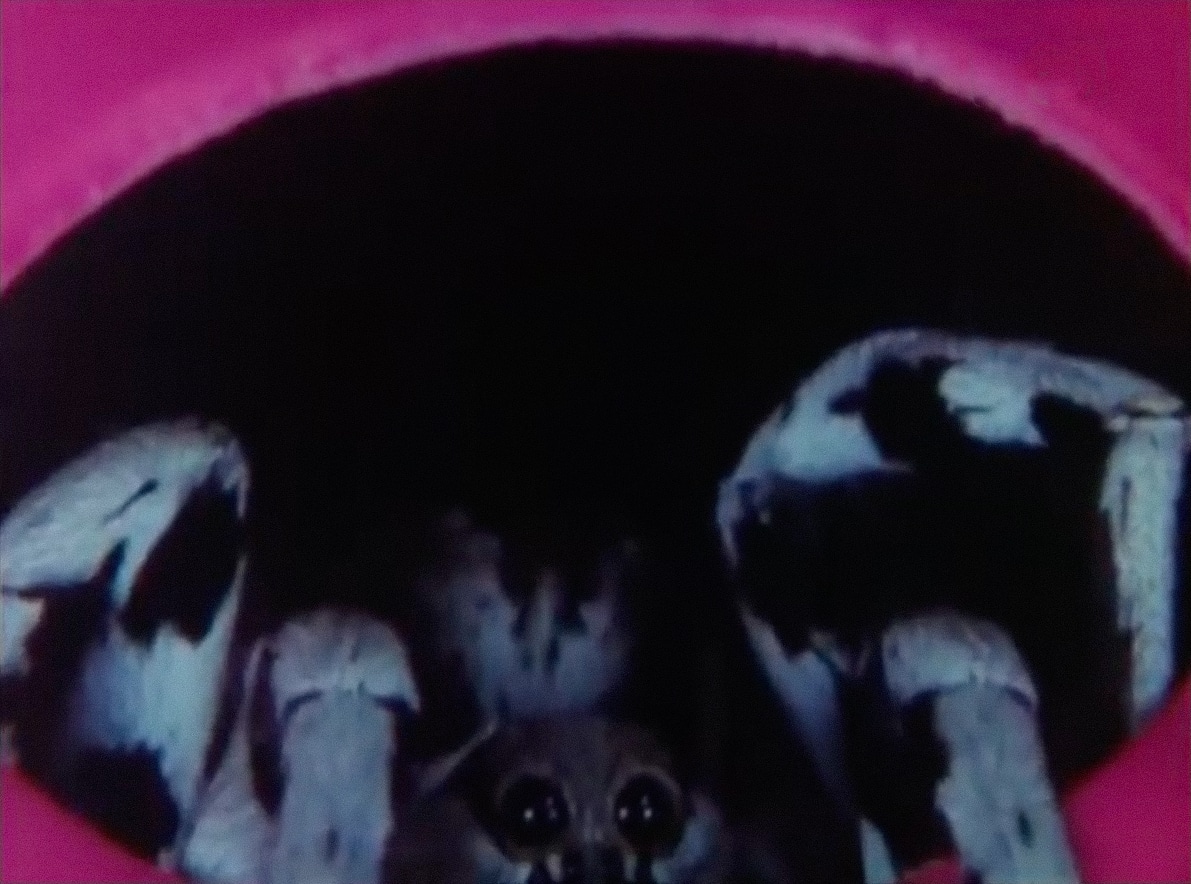
What will come out of this hole? In fact, for a moment, I didn’t know. In this abrupt and brief dramaturgy, something climbs up, two eyes emerge at the bottom of the screen, look at us – the only camera gaze of the credits. Watching it, I felt nauseous – a sense of repulsion, more exactly. A form of overkill, of abjection, emerges that I had never seen. I had never seen or imagined the eyes of a spider. Then the monster ventures out of its hole, its legs freeze, it shyly sets back off two more times, then what seems like a face comes into the shot. And the whole body comes into the shot with repulsive slowness. This disproportionate animal seems as frightening as it is frightened. I am well aware of my anthropomorphic projection, but I see dread, fragility in force. This contradiction heightens the sense of unease. The face fills the shot, looking at me, then slips away.
The unexpected nature of this hole in the middle of the bestiary of the credits multiples its power of evocation. It is a mini-horror film set in the middle of the scientific credits.
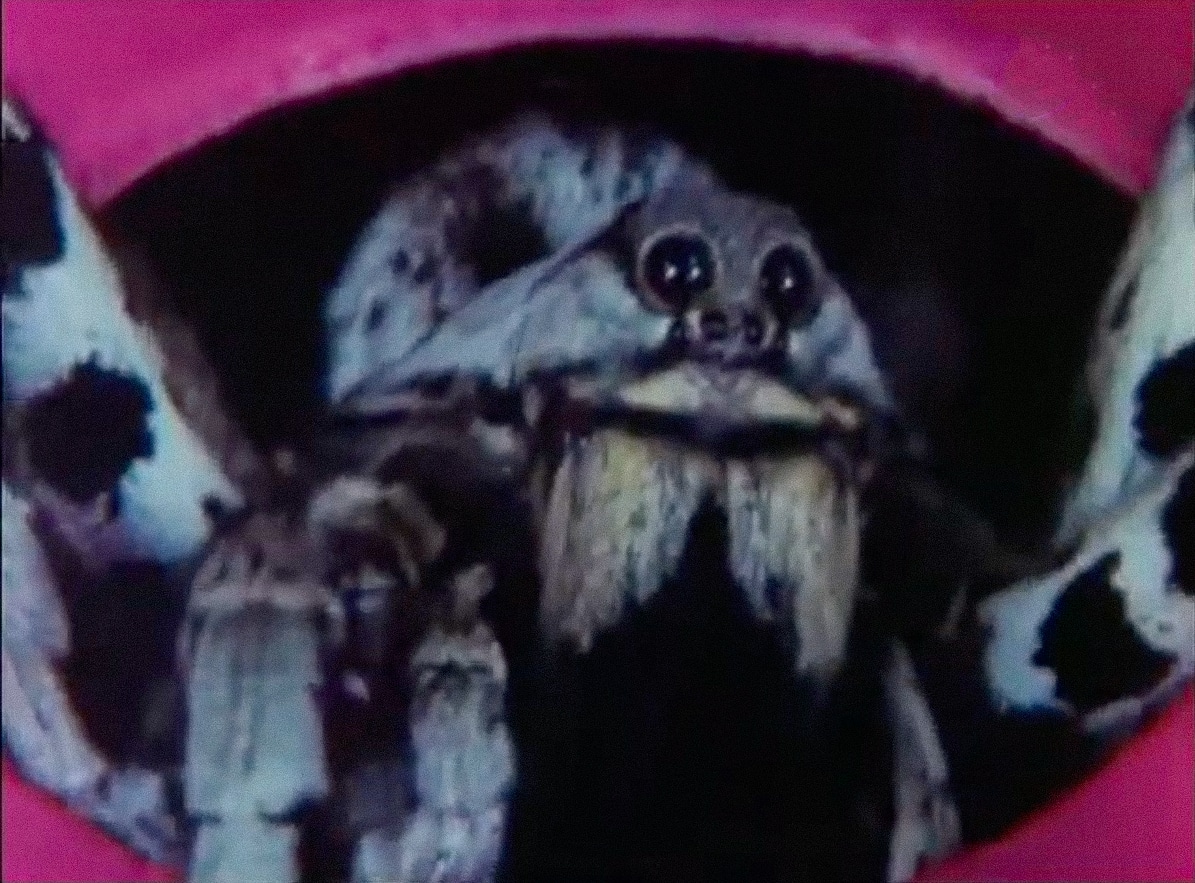
This is an Italian film, and Italian audiences (and others, no doubt) must have seen more quickly than I that this is a tarantula, a common spider in southern Italy. The tarantulas of Apulia don’t spin webs, but dig holes. They indeed have very disturbing faces, unlike bird spiders, for example. A scientific gaze would have identified eight eyes, rather than the two eyes that stared at me with fragility, and what I viewed as two nostrils. The exegesis is enhanced by this. Tarantulas go hand in hand with tarantella: does Piero Piccioni’s energetic percussion composition imitate the fast-paced rhythm of these folk dances, said to heal those bitten by tarantulas by helping the venom seep out?
Fully aware that it is a tarantula, I keep speaking generically of “the spider”. The one at the end, when Monicelli’s name appears, is indeed a tarantula; but the one that climbs up and looks at me is a spider, an animal, a creature, a primitive being. The way it appears changes everything. I’m happy not to have discovered the tarantula’s “face” on an internet thumbnail amidst countless photos of strange insects – but instead, in a long shot that gives the animal time to show itself. This is the very power of cinema, which, since its beginnings, has strived to break down animal movement. We sense it rising from the depths, and from the depths of time, like an ancestral animal. It is often forgotten how our relationships with animals involve time: all primitive animals (crocodiles, bird spiders, iguanas) touch us in ways that are different from other animals. It is tempting to interpret this oldness: the dead grandmother of the title, the nonna, is it her? She is the great predator of these credits, with a status of her own.

Yet this image evades all attributions – not grandmother, director of photography, director or even tarantula. It is something rising from the depths. It is a combination of movements and colors, behind a face looking at me. Its ashy color is surprising, as though it came from the fireplace. It is a small black-and-white fragment (in sharp contrast with the pink of the hole from which it emerges), evoking the bird spider from the credits of Bergman’s Persona (1966), a black smudge on white light. Animals are the site of metaphor, a generator of images. This spider “face” has been depicted by artists: Odilon Redon’s prints, Lautréamont’s description of his “tarantula” (as it crawls out of a hole), by which, “Every night, at the hour when sleep has reached its highest degree of intensity, an old spider of the larger species slowly protrudes its head from a hole in the ground, at one of the intersections of the angles of the room.” An image exactly mirroring that of the credits.
The sense of repulsion ultimately comes from seeing something that should not have been seen. In Visible Man (1924), Béla Balasz describes the use of close-up to film animals: “[We] suddenly find ourselves confronted with an unaccustomed, mysterious, unnatural image of nature. We sometimes feel at this point that we have eavesdropped on a profound, sacred mystery, a hidden life that frequently possesses the secret charm of the forbidden. […] However, one of our deepest metaphysical yearnings is to see what things are like when we are not present.” This must then be the starting point: recognizing the power on the psyche of seeing what we are not meant to see. Seeing what only exists in our absence. Recognizing that this encounter is anthropological and metaphysical.
I am overcome with vertigo: is this spider my anxiety, brought to life and into the light of day? Or is it in fact me, grappling with the end of lockdown and forced to emerge from my hole? But the unease goes beyond my own individuality, and is related to this monstruous assembly of animality and humanity, the human covering the living world. If the spider resembles me, then who am I?
to be continued
Stéphane Delorme
Translated from French by Sara Heft

